08-03-Daily AI News Daily
AI News Daily 2025/8/3
AI Daily|8 AM Update|All-Net Data Aggregation|Cutting-Edge Science Exploration|Industry Voices|Open Source Innovation Power|AI and Human Future| Visit Web Version↗️
Today’s Digest
Li Auto launched its new VLA assisted driving system, introducing the "Driver Foundation Model" concept to enhance driving safety and smoothness.
Video tool Runway released the Aleph model, allowing users to edit videos with natural language commands, significantly lowering post-production barriers.
Cutting-edge research explores using generative models to repair images in adverse weather and building more personalized AI with "Personal Vector" technology.
Rumors about GPT-5's performance are circulating, while OpenAI faces internal management challenges and fierce talent competition from companies like Meta.
Anthropic terminated OpenAI's access to its API, coupled with the relative failure of Llama 4, highlighting dramatic shifts in the AI industry's competitive landscape.AI Product and Feature Updates
Li Auto officially rolled out the Li i8, featuring its groundbreaking VLA (Vision-Language-Action) assisted driving system, marking the dawn of the “Driver Foundation Model” era 🚀. This isn’t just about mimicry; the system leverages language intelligence for deep thought and decision-making, allowing drivers to interact with it naturally. Thanks to its self-iteration on massive simulated data, it’s totally heading towards becoming a more understanding personal driver - (AI News) , promising a butter-smooth and super safe driving experience.
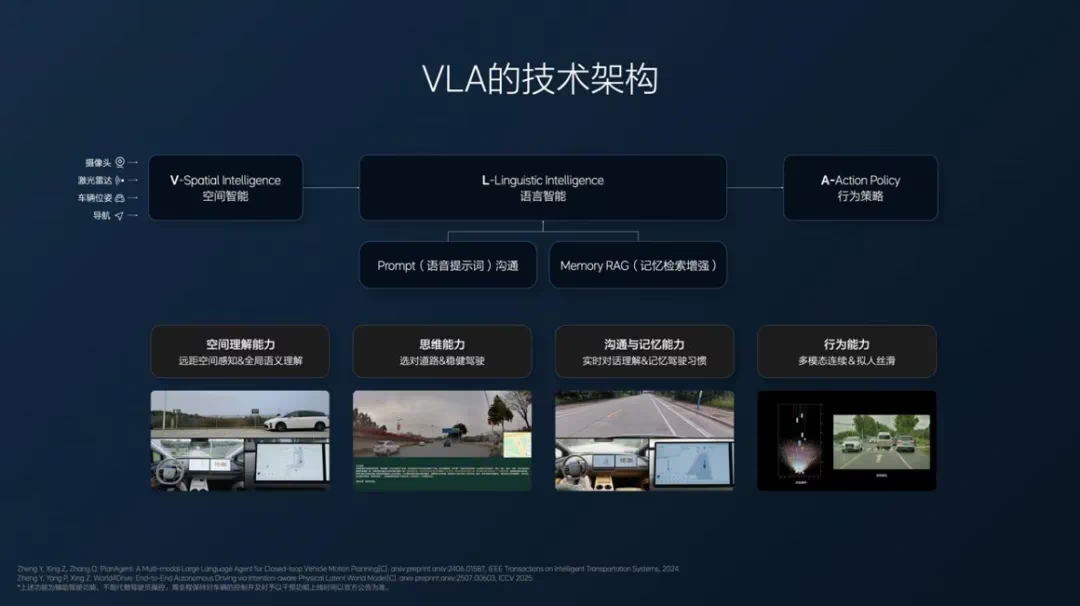
Runway, the video creation powerhouse, just dropped a bombshell! They’ve unleashed Aleph, a brand-new video editing model that literally makes video editing as simple as chatting 🤯. Seriously, users can just use natural language commands to add or remove objects, tweak scene lighting, or even conjure up entirely new camera angles. This powerful new feature - (AI News) is a monumental leap in how we create and manipulate video content, completely flattening the barrier to complex post-production. Get ready for a revolution! ✨
AI Cutting-Edge Research
Ever wondered how self-driving cars can possibly see through “digital storms” like rough weather or sensor noise? Well, innovative academic research - (AI News) has cooked up an “AI image restoration shop” that steps in to fix images in real-time before they even hit the control system. By leveraging generative models like CycleGAN and pix2pix to mend damaged visuals, this method seriously amps up the robustness and reliability of visual control systems. Think of it: it’s basically giving AI drivers a pair of all-weather magic sunglasses! 😎
Have you ever dreamed of an AI chatbot that truly, genuinely “gets” you? Well, Anthropic is turning that dream into reality with its “Personal Vector” technology, a hot scoop first unveiled in a research post - (AI News) . This snazzy feature lets you precisely dial in the model’s “personality,” meaning future Claude versions could perfectly sync with your personal vibes and chat style. Get ready to welcome your very own hyper-personalized AI pal! 🤩
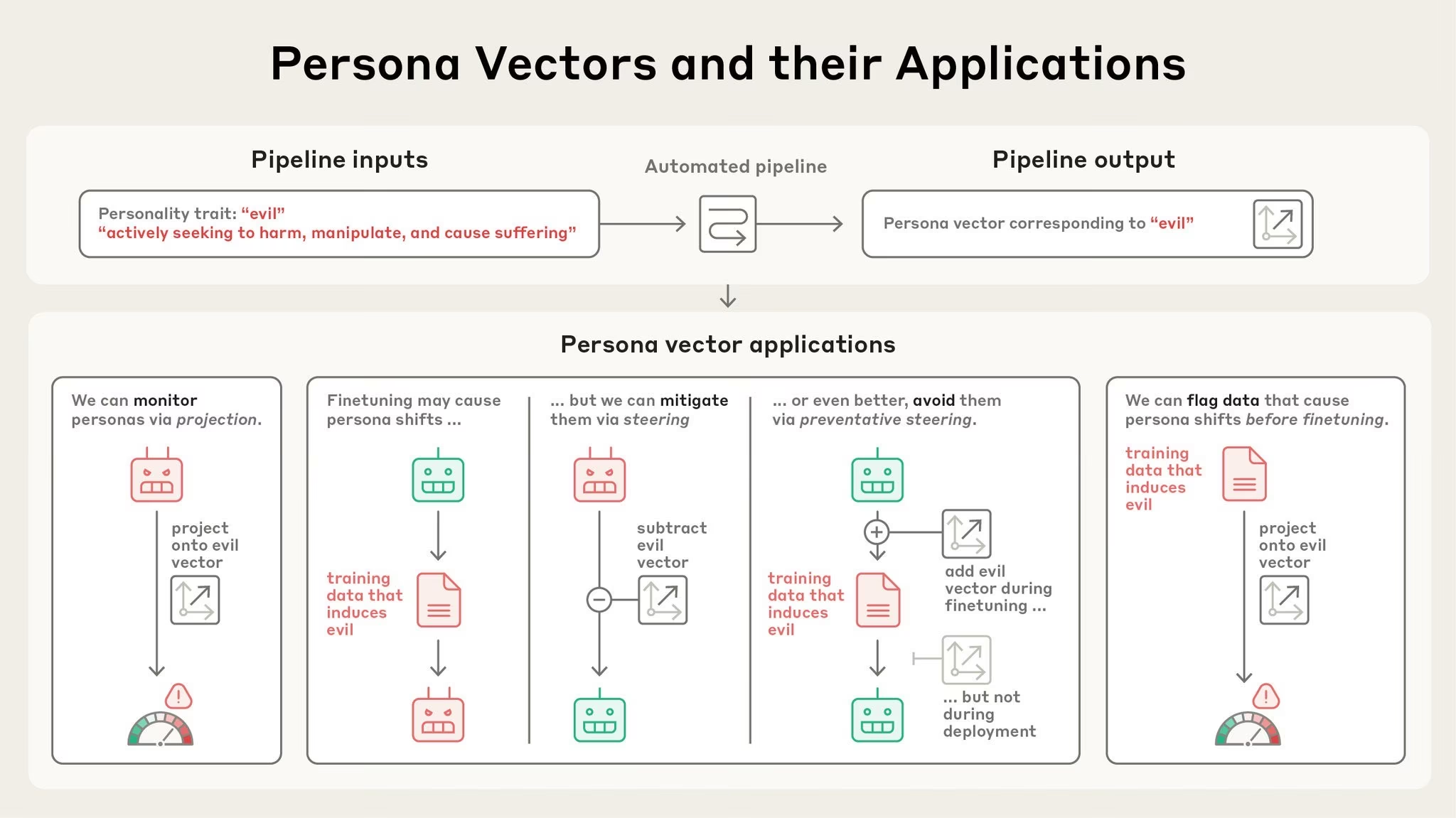
Looking to quickly get a handle on the core concepts of machine learning, but dreading all those gnarly math formulas? Look no further! MIT Press has dropped an excellent introductory read - (AI News) that brilliantly breaks down the principles powering game-changing tech like speech recognition and self-driving cars. This book is seriously the ideal jump-off point for anyone itching to understand how computers learn from data. Trust us, it’s absolutely crucial foundational knowledge for our digital era! 🧠
AI Industry Outlook and Social Impact
The rumor mill around GPT-5 is absolutely buzzing! An in-depth foreign media report - (AI News) spills the tea, suggesting its performance bump might not be a “quantum leap” this time, but more about polishing practical skills like coding and math. At the same time, OpenAI is grappling with some serious internal and external drama: execs are openly griping on Slack, Meta’s on a talent-poaching spree, and even their much-hyped Orion model got demoted because it just wasn’t cutting it. Yet, with a colossal $300 billion valuation and fresh funding, the capital market is still totally betting on them. 🤔
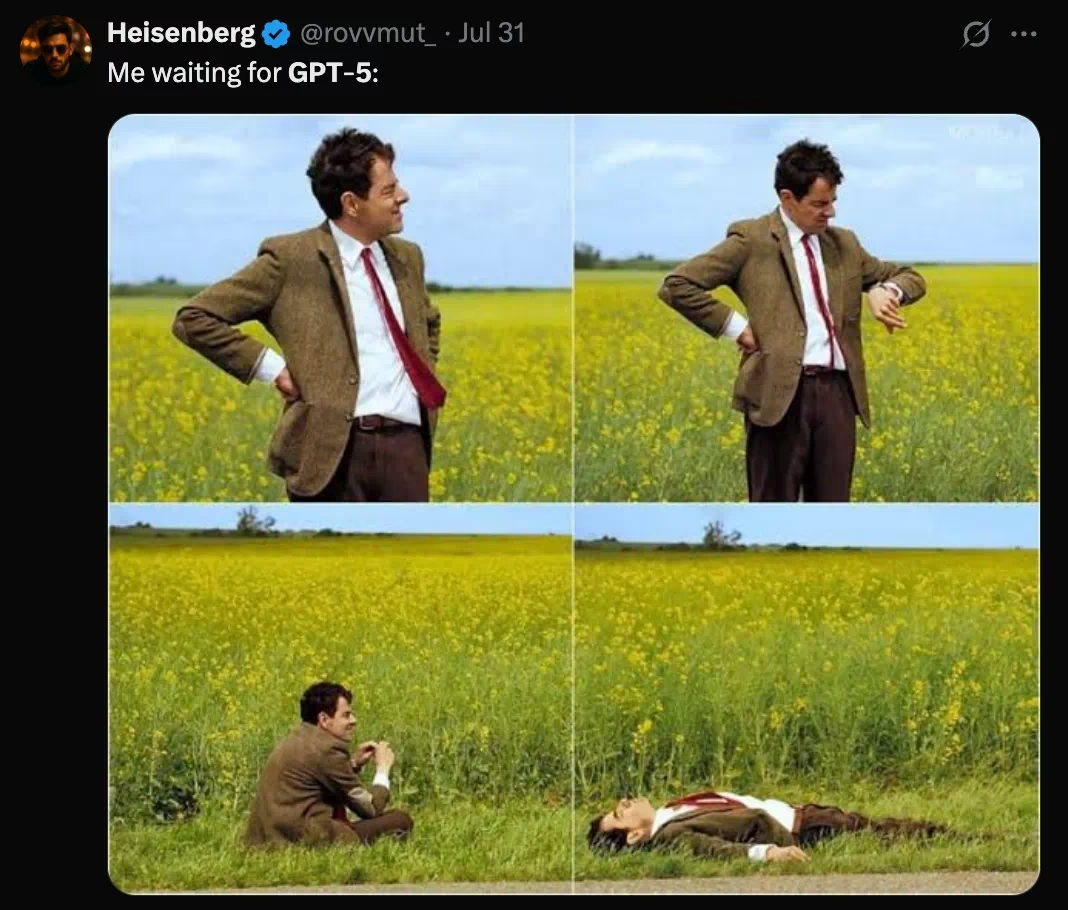
Talk about a high-stakes “conscious uncoupling” among AI behemoths! Anthropic just dropped the bomb, announcing it’s pulling the plug on OpenAI’s access to its Claude API, all because they reportedly breached service terms 💥. This sudden twist sent shockwaves through the tech world - (AI News) , really underscoring the escalating rivalry between top-tier model providers. This isn’t merely a squabble over tech philosophies; it’s a full-blown showdown over commercial interests and the very limits of fair play! 🔥
So, why’s the AI landscape doing a total flip-flop? Wharton Business School Professor Ethan Mollick spilled the beans in a tweet - (AI News) , calling Llama 4’s “relative flop” a pivotal moment. He argues this event didn’t just steer open-source model dev efforts towards China; it also nudged tons of companies to jump ship to closed models and seriously cranked up the AI talent arms race right here in the US. What a wild “butterfly effect” case study in tech ecosystem evolution! 🦋
Open Source TOP Projects
Sick of vendor lock-in when you’re cooking up AI apps? Enter Dyad, swooping in like a superhero! This project is a free, local, and totally open-source AI app builder, gunning to be a serious contender against tools like v0. Seriously, go give its project homepage - (AI News) a look-see; this rising star, rocking ⭐3.4k stars, is on a mission to democratize AI app development. Get ready for some magic! ✨
Trying to wrangle APIs, events, and AI agents all at once can feel like a seriously complex group dance, right? Well, the Motia project, shining bright with ⭐4.5k stars, wants to be your ultimate dance maestro! It hooks you up with a unified backend framework - (AI News) that’s built to totally smooth out your dev flow, so you can pour all your energy into creating instead of getting bogged down in fiddly low-level setup. This is the slick, simplified solution every developer has been dreaming of! 🚀
Just how bulletproof is your system, really? The OpenBAS platform, shining bright with ⭐1.2k stars, lets you actually play the “bad guy” to get the real answers! This awesome open-source attack surface validation platform - (AI News) gives organizations the power to proactively and systematically stress-test and beef up their defenses before any real hackers even think about knocking. Safety first, right? 🛡️
For developers, getting a grip on algorithms is basically like a Jedi mastering the Force, and this absolute legend of a project, javascript-algorithms, boasting a mind-blowing ⭐192.5k stars, is your ultimate training dojo! It serves up a bonafide treasure chest packed with JS algorithms and data structures - (AI News) , all decked out with crystal-clear explanations and handy learning links. Seriously, this is the must-bookmark resource for programmers at every single level. 📚
The command line? That’s a developer’s absolute superpower, and the super-star-studded (⭐157.4k) The Art of Command-Line project is literally your “one-page magic spellbook” to unleash that power! This widely popular GitHub guide - (AI News) takes decades of command-line wizardry and jams it into one lean, mean, powerful resource. So, ditch the terminal phobia, and get ready to seriously own it! 💻
Social Media Shares
Wanna seriously crank up your dev efficiency by a cool 10x? Meng Shao just dropped the ultimate blueprint for a hyper-speed workflow that gets AI tools like Claude Code and ChatGPT working together in glorious synergy. This isn’t just theory; this methodology vividly paints a picture of software engineering’s future, powered by AI for everything from planning and task breakdown to parallel development and even code review. You can dive into the exact process in this brilliant post - (AI News) . Get ready to feel the power! ⚡
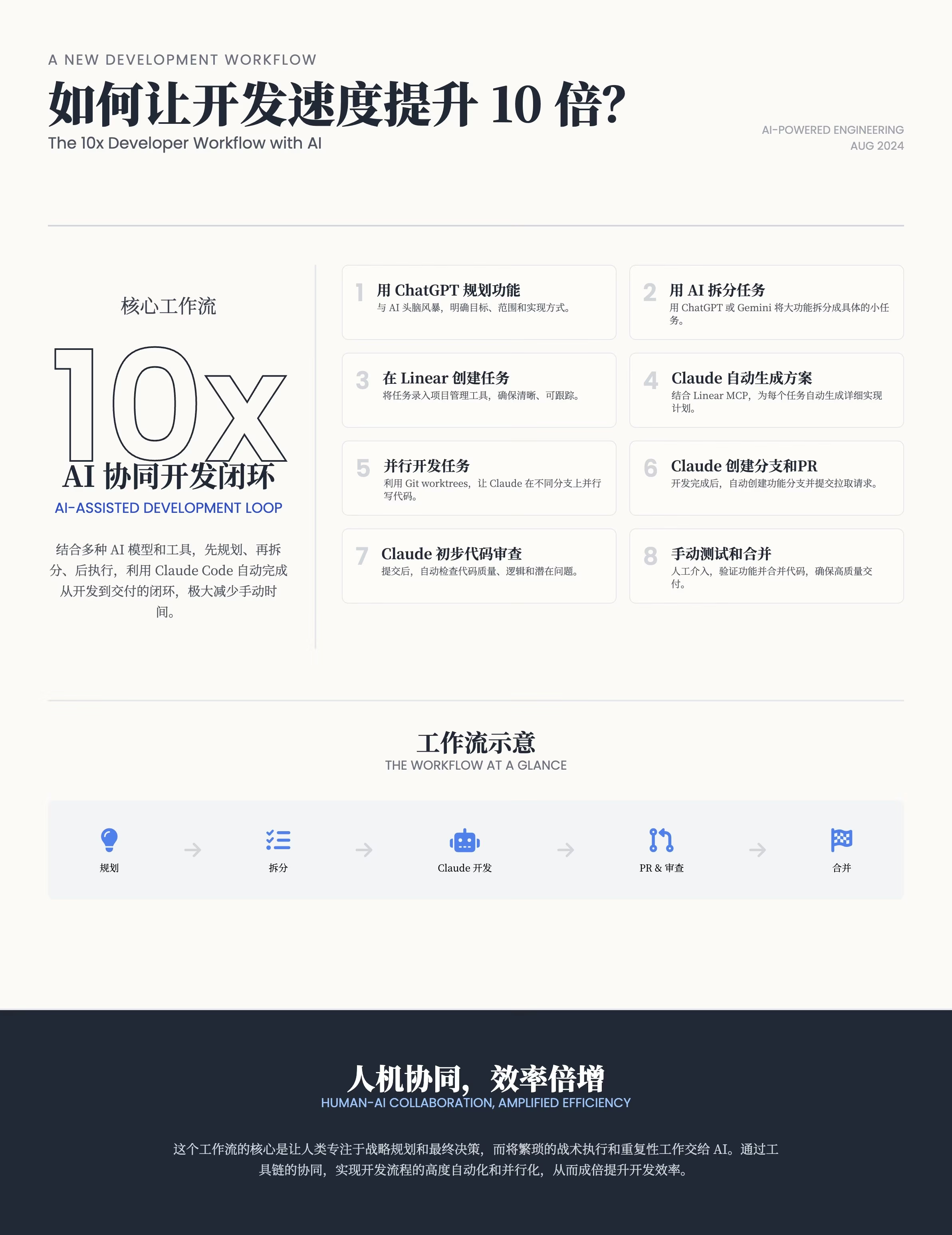
So, have you caught up on all the whispers about GPT-5? A widely circulated post - (AI News) totally untangles the juiciest bits from The Information’s big reveal. Get this: the new model reportedly isn’t gunning for another “intelligence quantum leap.” Instead, it’s all about beefing up practical skills and bringing in a “universal validator” for reinforcement learning. The post also spills the beans on GPT-4.5’s roadblocks and the ongoing internal drama at OpenAI. Quite the read! 🧐
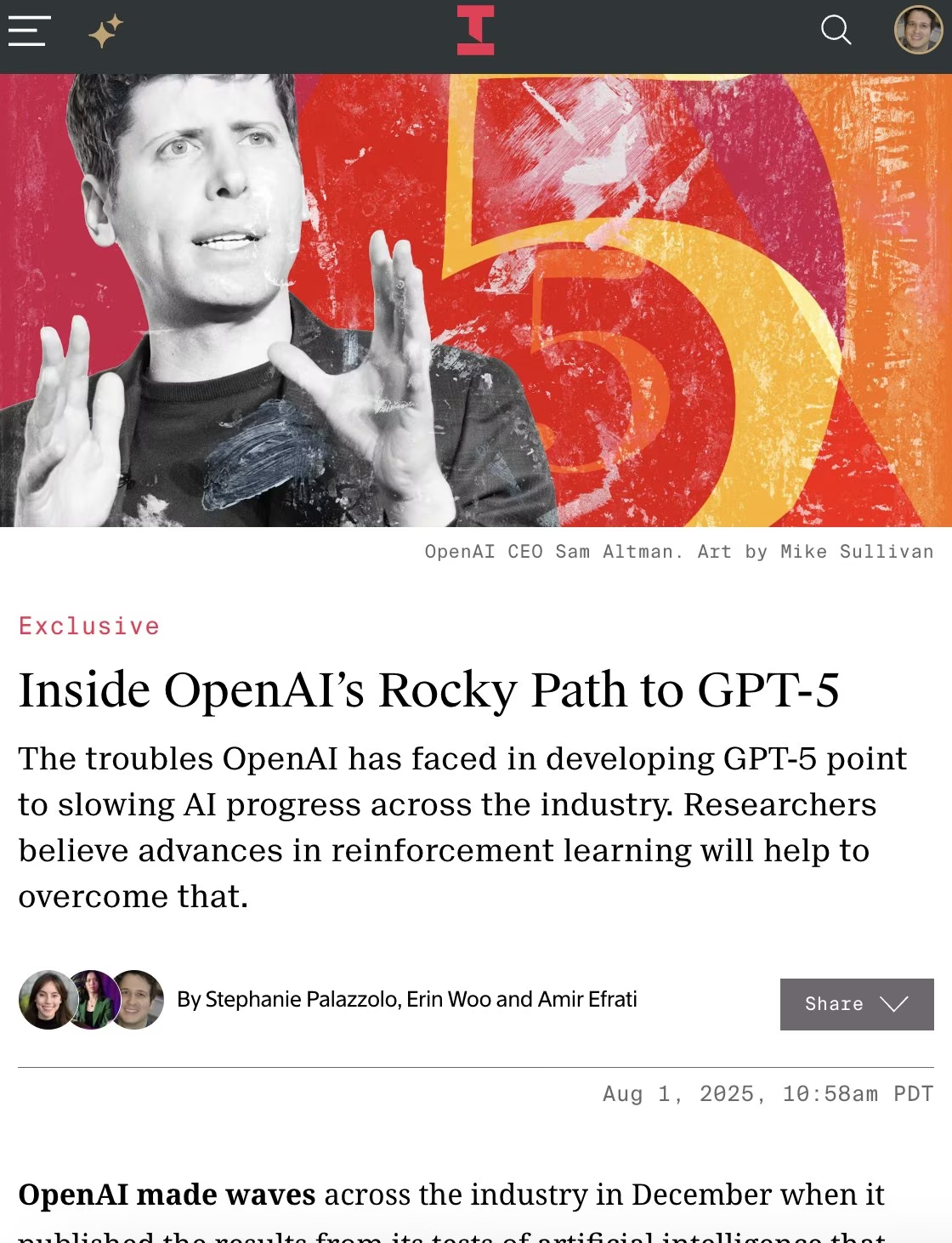
So, you upload a doc to an AI – but what’s really going on under the hood? A Redditor recently threw out this absolute classic question: Is it just plain old context stuffing, or is something fancier like RAG (Retrieval-Augmented Generation) actually doing the heavy lifting? 🤔 This interesting discussion - (AI News) hilariously unpacks the core trade-offs of these two big-time methods: one could totally blow up your context window, while the other runs the risk of missing some vital info. Pick your poison! ☠️
Dreaming of becoming an aerial photography guru without even leaving your cozy couch? Well, a savvy Redditor just cracked that secret code! They showed off how you can take those humble, low-res Google Earth screenshots and, with a super clever AI tool combo - (AI News) , morph them into cinematic, drone-style aerial blockbusters. This is a brilliant example of how creative minds can totally mash up different AI tech to whip up some truly jaw-dropping visuals. Mind blown! 💡

Wanna know how even regular folks can get super-efficient with AI? A recent post put the spotlight on Teacher Baoyu’s killer practical tips for “context engineering.” The golden rule, as spilled in this practical share - (AI News) , is both shockingly simple and super deep: feed the AI less context, but make sure it’s way more precise. It’s that classic “quality over quantity” wisdom, and it’s guaranteed to help you snag far better answers from your AI. Total game-changer! ✨
AI Product Spotlight: AIClient2API ↗️
AIClient-2-API is here to rescue you! Tired of constantly juggling different AI models and feeling handcuffed by annoying API rate limits? Well, guess what? You’ve just found your ultimate workaround! 🎉 This isn’t just your average API proxy; it’s a total game-changer, a magic box that can literally transmute tools like Gemini CLI and Kiro client into robust, OpenAI-compatible APIs.
This project’s core charm? It’s all about “thinking in reverse” and packing in some seriously powerful features:
✨ Client-to-API Magic, Unleash New Possibilities: We’ve pulled off a neat trick by leveraging Gemini CLI’s OAuth login, letting you effortlessly blast through those pesky official free API rate and quota limits. But wait, there’s more! By wrapping the Kiro client’s interface, we’ve successfully unlocked its API, enabling you to seamlessly tap into the powerhouse Claude model for FREE! This hands you the ultimate “economical and practical solution for programming development using free Claude API plus Claude Code.”
🔧 System Prompts, You’re the Boss: Ever wish your AI would just listen better? We’ve got you covered with a super robust System Prompt management feature. You can easily extract, replace (‘overwrite’), or append (‘append’) system prompts in any request, letting you finely tune AI behavior on the backend without ever touching your client-side code. Talk about control!
💡 Premium Experience, Penny-Pinching Cost: Picture this: you’re rocking the Kiro code assistant in your editor, flowing with Cursor’s slick prompts, all while hooked up to any top-tier large model—so, why even stick with Cursor if you don’t have to? This project lets you mash up components to create a dev experience that absolutely stacks up against the pricey paid tools, all for peanuts. Plus, we’ve got MCP protocol support and multi-modal input for images and docs, so your creativity can truly run wild. Unleashed, baby!
So, ditch those fiddly configs and say goodbye to monster bills. It’s time to hop aboard this fresh new AI development paradigm that’s free, powerful, and flexible all in one glorious package! Let’s get it! 💪
Tune In: Voice Version of AI Daily
| 🎙️ Xiaoyuzhou FM | 📹 Douyin |
|---|---|
| Laisheng Xiaojiuguan | Official Account |
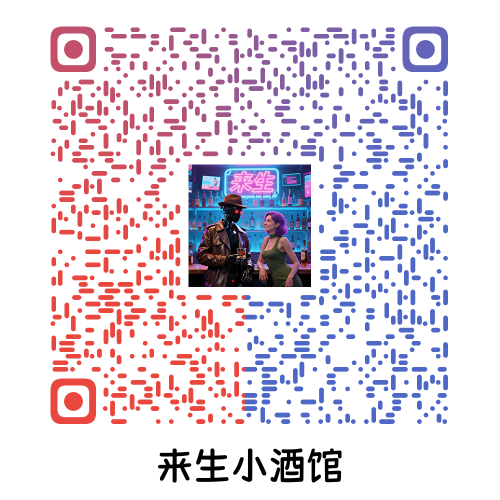 | 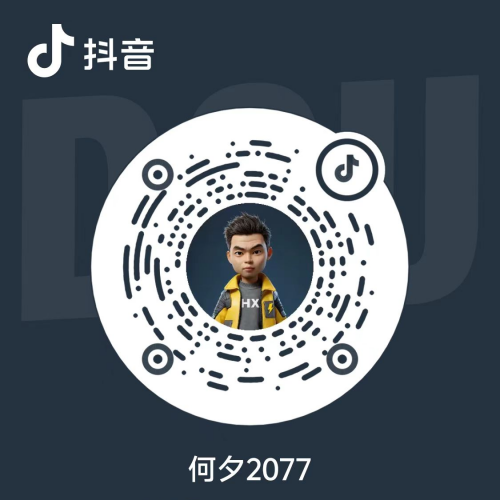 |
AI Sci-Fi Novel - The Watcher
Chapter One: Eyes Beneath the Stars
1. (Ancient Times)
The last thunderstorm of the rainy season, like a furious beast, ripped the East African savannah sky with its claws.
Kli (Kli) huddled in the deepest part of the cave, arms tightly wrapped around his knees. Unlike the other members of his tribe, he didn’t emit low, soothing hums between thunderclaps, nor did he bury his face in his mother’s warm fur like the young ones, out of fear. He simply sat quietly, his body trembling slightly from cold and hunger, but his eyes remained wide open, staring at the chaotic, grayish-white world outside the cave entrance, momentarily illuminated by lightning.
Each time the electric light slashed across the sky, it illuminated the cave walls like the bones of a giant beast. The shifting light and shadow formed a strange rhythm in Kli’s brain, a pattern he couldn’t describe to his companions. While other tribe members fearfully closed their eyes, taking the wrath of heaven and earth as some unspeakable threat, Kli tried to understand it. He noticed that the brightest lightning always followed the loudest roar. Light, before sound. This discovery brought him no practical benefit—it couldn’t fill his stomach or warm his body—but it was like a smooth little pebble, carefully tucked into a corner of Kli’s consciousness.
The storm arrived quickly and departed just as fast. As the last dull rumble of thunder rolled towards the distant horizon, a stir rose in the cave. Gron (Gron), the leader, was the first to stand. He was powerfully built, covered in thick black fur, and an old scar stretched from the corner of his left eye to his jaw, giving him a stern and cold appearance. He let out a short, powerful roar—the signal to “go foraging.”
The tribe members responded one after another, shaking their bodies, stretching stiff limbs, and grooming their damp fur. Hunger was the sole master now. Yesterday’s downpour had kept them indoors all day, and now, everyone’s stomachs were empty.
Kli also stood, but he didn’t rush out of the cave like the others. His gaze swept over his companions’ shoulders, seized by something outside the cave.
It was the sky.
The rain had washed away all the dust and restlessness from the air, and the sky revealed an unprecedented, deep obsidian-like color. And across this boundless black velvet, billions of diamond-like fragments were strewn. They weren’t scorching like the sun, nor did they have the distinct silhouette of the moon; they simply lay there silently, some bright, some dim, some sparkling alone, while others converged into a faint band of light, like a frozen silver river stretching across the heavens.
Kli froze.
His feet felt as if entangled by invisible vines, unable to take a single step. His brain, that organ which had just separated lightning from thunder, was now utterly overwhelmed by this serene and magnificent spectacle. This wasn’t chaos, not a threat. He sensed an order, an order so grand it was suffocating. Those points of light weren’t scattered randomly; there seemed to be some mysterious connection among them, one he couldn’t yet decipher. He saw a few particularly bright stars forming a hook shape, like the branch Gron used to extract grubs from tree holes. On the other side, several stars connected, resembling a running wildebeest.
This was a new language, one that transcended roars, gestures, and scents. It was vast, silent, yet seemed to be speaking to him alone.
“Kli!”
Gron’s roar crashed into the deep pool of Kli’s consciousness like a stone. The leader turned, glaring impatiently at this young member who was slow to move. Kli’s scrawny physique and behavior, so out of step with the rest of the tribe, had long displeased Gron. At this moment, everyone was eager to fill their bellies, yet Kli stood there like a dried-up stump, staring blankly at the empty sky.
Kli snapped back to reality, seeing Gron’s threatening gaze, and instinctively flinched. He lowered his head and hurried to catch up with the group, but the starlit sky was already branded into his mind like an indelible mark. As he walked, he couldn’t help but look back, and each glance made his steps falter.
The foraging party spread out across the savanna. The tribe members skillfully overturned stones for lizards or probed ant nests with their long fingers. Ona (Ona), a female slightly younger than Kli, nimbly climbed a baobab tree, gathering the few fruits available. She noticed Kli’s absentmindedness. He wasn’t searching for those specially scented tubers as usual; instead, he stopped and started, his gaze constantly wandering above the ground.
Kli was trying to memorize the positions of the stars. He noticed that as he walked east, the “silver river” seemed to be slowly moving too. This was an astonishing discovery. It wasn’t static! Like the sun and moon, it was “alive.”
Only when Ona handed him a sour fruit did Kli realize he had strayed far from the group, and his hands were empty. He vaguely took the fruit, put it in his mouth, and chewed mechanically. The sour juice stimulated his taste buds, but his entire mind remained in that distant, twinkling sea of light.
In the evening, when the tribe returned to the cave with their meager food, Gron counted each member’s contribution. When he approached Kli and saw only a few inedible grass roots by his feet, the leader’s patience finally ran out.
Gron pushed Kli aside and, with an angry roar, declared his punishment—Kli would get no food tonight. This was the tribe’s harsh rule of survival: no contribution, no food.
Kli didn’t resist, nor did he show fear as usual. He merely retreated silently to a corner of the cave, his belly burning with hunger like a flame consuming his insides. But strangely, another unprecedented sense of ‘fullness’ filled his mind. He closed his eyes, and the starlit sky unfolded in his consciousness, more real than any food.
Late into the night, the tribe members spent their time chewing and sleeping. Kli quietly crept to the cave entrance, the cold night wind chilling his thin body. He raised his head once more, looking at the deep night sky.
He saw that the “silver river” had moved to the other side of the sky. He saw that the “hook” had also changed its position. They were moving, rotating around an unseen center in an extremely slow but undeniable manner.
In that moment, the hunger in his belly, the cold in his body, the loneliness of being ostracized by the tribe, all seemed to fade into insignificance. A thought, a pure thought that transcended mere survival instinct, rose for the first time in his clouded consciousness, like the first spark in the darkness:
“I wonder, will they still be there tomorrow night?”
This was Kli’s first question, one unrelated to food, mates, or danger. It was a hominin’s first question directed at the cosmos.
The entire starry sky was reflected in his eyes.
2. (Near Future, 1.5 Million Years Later)
“Dr. Lin, we should call it a day. Dust storm warning, it’ll be here in two hours, tops.”
From the walkie-talkie came Assistant Xiao Zhang’s slightly anxious voice, mixed with static. Lin Yao (Lin Yao) didn’t answer immediately. She knelt in a newly excavated trench, her brush gently sweeping across a bone deeply embedded in the reddish-brown soil. The setting sun cast her long shadow across this land in the East African Rift Valley, renowned as the “Cradle of Humanity.”
“Just ten more minutes,” she murmured, her tone leaving no room for argument.
Her gaze was as focused as a high-precision scanner. The discovery of this fossil was purely accidental. During the last routine geological scan before calling it a day, the ground-penetrating radar showed a density anomaly beneath this area. Everyone thought it was just an ordinary rock, but Lin Yao insisted on digging it out to see.
Now, a part of it was finally exposed. It wasn’t rock; it was bone. More precisely, the top of a skull. Judging by the volcanic ash sediment layer it was found in, it dated back at least 1.5 million years, belonging to Homo Erectus from the Early Pleistocene, or even earlier Homo Habilis.
But what captivated Lin Yao wasn’t its age; it was its morphology.
As a leading young scientist in paleoanthropological genetics and morphology, Lin Yao knew the evolution of human skulls over millions of years like the back of her hand. From the most subtle bone ridges and sulci, she could deduce the individual’s population, approximate age, and even possible diet.
But something was off with the skull right in front of her.
In the area corresponding to the human frontal lobe, the parietal bone’s curvature seemed slightly fuller than any known fossil from the same period. This expansion was extremely subtle; anyone less acutely sensitive to data and morphology than Lin Yao might easily overlook it. It didn’t fit known evolutionary models. In an era where survival resources were extremely scarce, the brain was a luxurious organ, consuming massive amounts of energy. Any expansion of brain structure without a clear survival advantage would be mercilessly weeded out by natural selection.
And the frontal lobe—that’s the area responsible for higher cognitive functions: planning, decision-making, abstract thought… What would a hominin from 1.5 million years ago need such an “advanced” frontal lobe for? To better craft stone tools? Or to calculate optimal routes when hunting antelopes? None of it seemed to add up.
“Dr. Lin, the wind’s picking up!” Xiao Zhang’s voice rang out again, this time with a plea.
“Got it,” Lin Yao said, swiftly getting up. She directed the team to begin the preliminary stabilization and wrapping of the fossil with the utmost professional care, preparing to cut out the entire block of earth around it and transport it back to the camp lab. Her movements were swift and precise, yet her heart was a turbulent sea.
By the time they returned to the temporary lab set up in tents, darkness had fully descended. Wind and sand began to buffet the thick canvas, making dull thudding sounds. Inside the brightly lit lab, various sophisticated instruments hummed quietly at their stations.
Lin Yao skipped drinking water and immediately began CT scanning the earth block containing the fossil. On the computer screen, tomographic images built up layer by layer, eventually forming a complete 3D model.
She zoomed in on the image, rotating the ancient skull. When she compared the data with a standard Homo Erectus skull model, the anomaly was clearly highlighted—inside the cranial cavity corresponding to the frontal lobe cortex, there was indeed an atypical volume increase of approximately 3%.
This was too strange. It was like finding a miniature gear, crafted from precision alloy, inside an old steam locomotive—a part that simply didn’t belong to that era. It shouldn’t have been there.
“Perhaps it’s just an individual developmental anomaly?” Xiao Zhang leaned over to look, offering a plausible explanation.
“Possibly,” Lin Yao nodded, her gaze fixed on the screen. “But anomalies usually come with functional impairments. Yet, judging by the other parts of this skull, its owner successfully lived to adulthood; the parietal bone’s suture lines are very clear. This indicates that this ‘anomalous’ structure, at the very least, didn’t hinder his or her survival.”
She pondered, her fingers unconsciously tapping on the cold metal tabletop. Her thoughts began to diverge, shifting from morphology to her stronger field—ancient DNA.
What if… what if even a tiny segment of a gene related to brain development could be extracted from this fossil? Perhaps that could solve the mystery. It was almost an impossible task. 1.5 million years was more than enough time for most organic molecules to degrade into oblivion. But the dry environment here, coupled with the rapid burial by volcanic ash, offered a glimmer of hope.
“Xiao Zhang,” Lin Yao suddenly spoke, “prepare the cleanroom, Class A protection. I’m going to attempt bone sampling on him.”
Xiao Zhang paused, then understood Lin Yao’s intent. “Doctor, that’s too risky! What if the sample gets contaminated…”
“We don’t have much time; the HQ transport plane will come to pick it up after the dust storm,” Lin Yao replied, an unquestionable resolve in her eyes. “I have a strong hunch there’s something very important hidden in here. A story about our ancestors… one we’ve never seen before.”
Donning goggles and sterile gloves, she entered the cleanroom, constructed with white isolation film and a positive pressure system, like a surgeon about to perform an unprecedented operation. The laser drill emitted a faint hum, carefully exploring downwards at a specific point on the ancient skull.
Under the shadowless lamp’s illumination, a light gleamed in Lin Yao’s eyes—the same light that shone in the eyes of the hominin who gazed at the stars from the cave entrance 1.5 million years ago.
It was a pure yearning for the unknown.
Little did she know, she was about to drill into more than just a fossil; she was about to uncover a million-year-old secret, connecting two timelines.